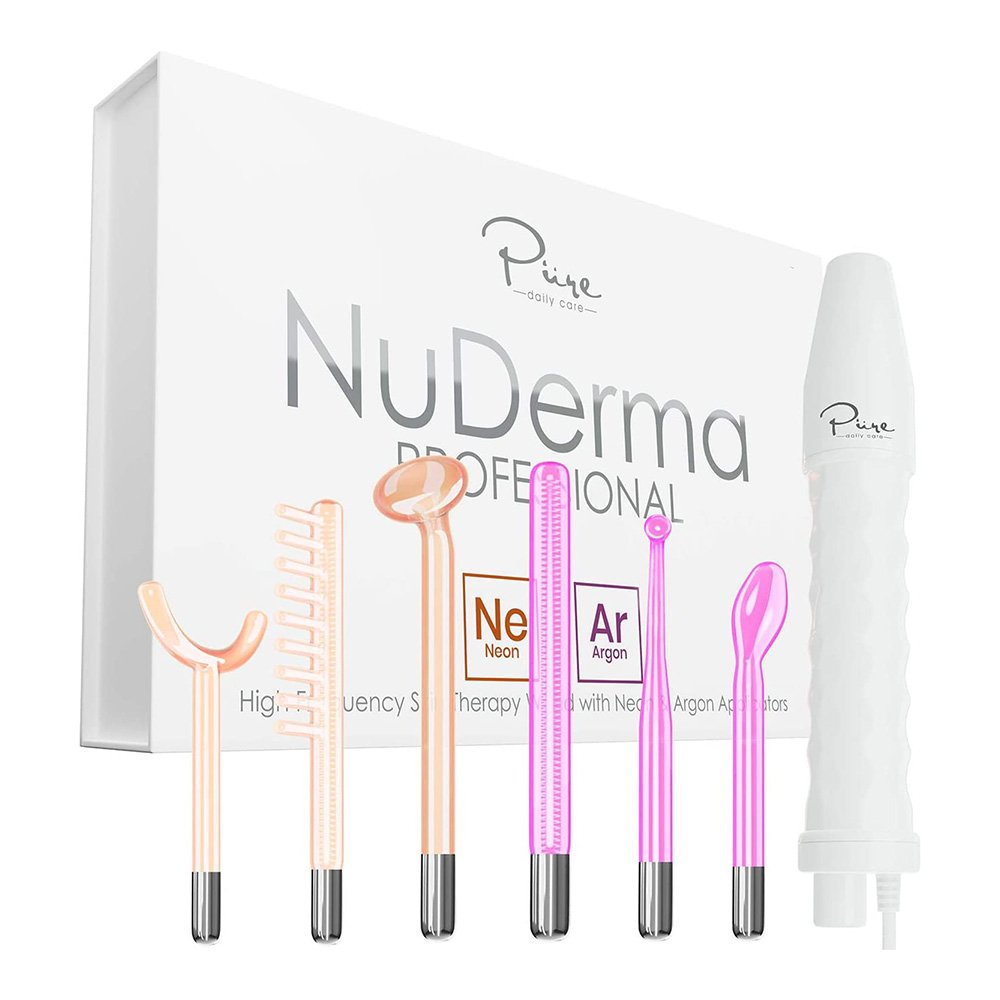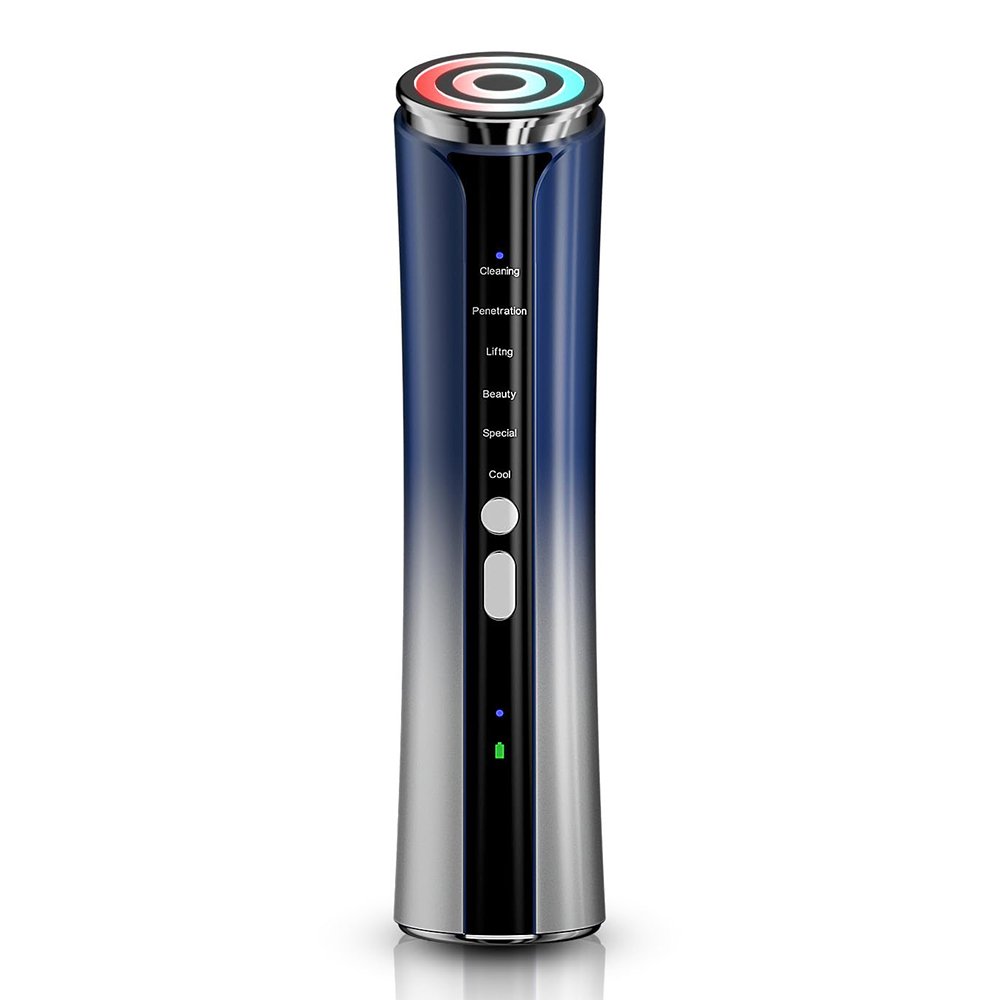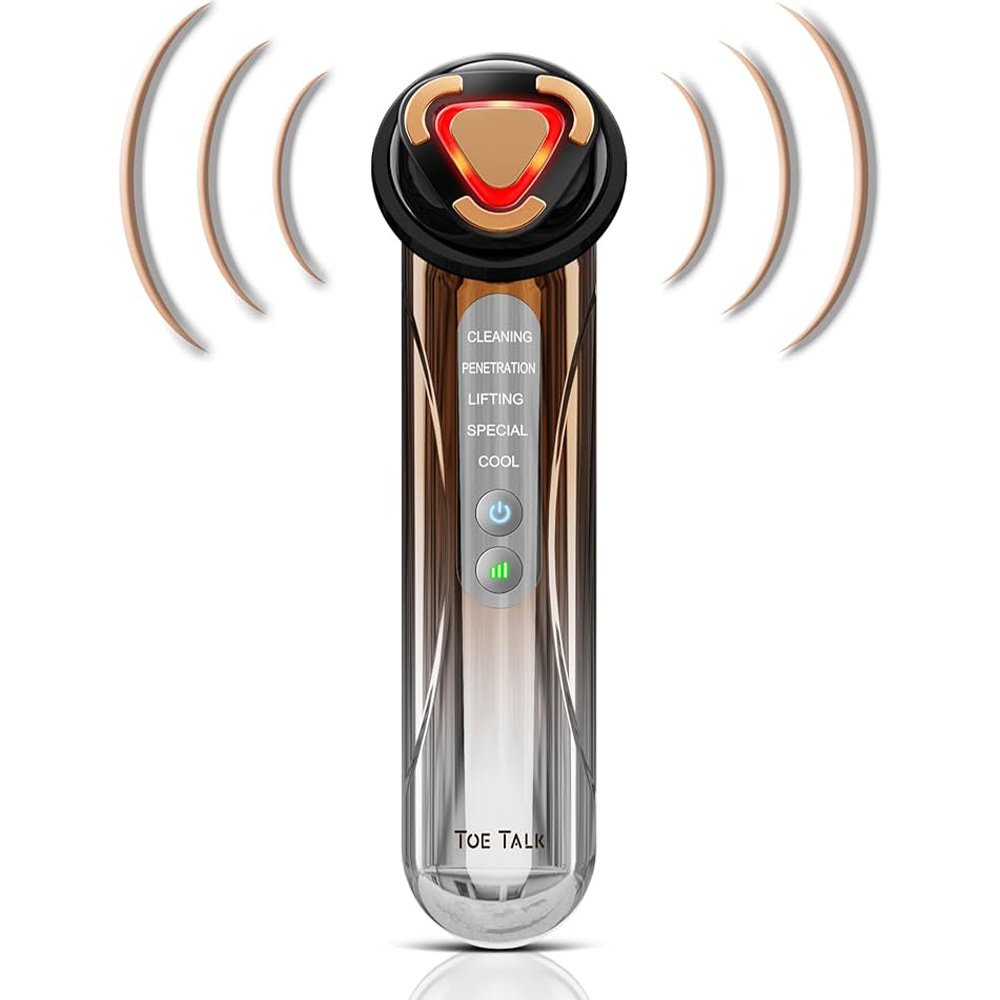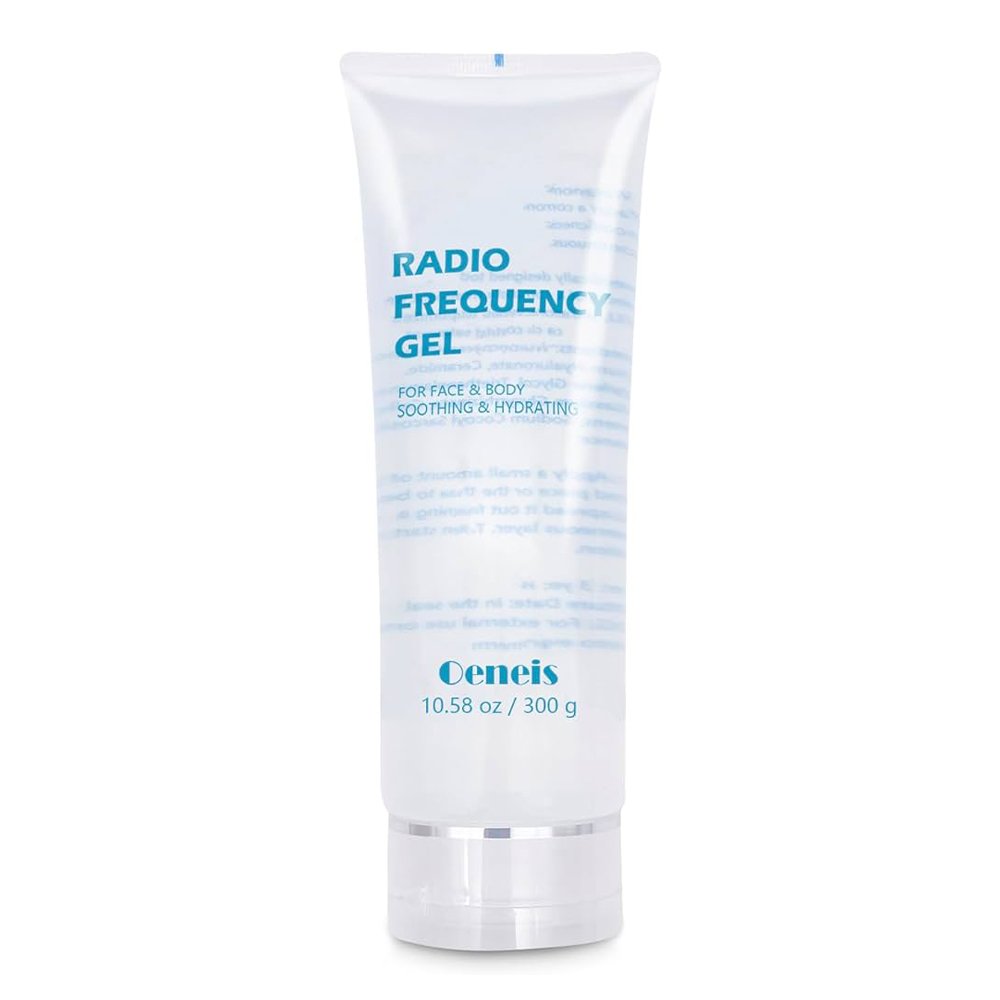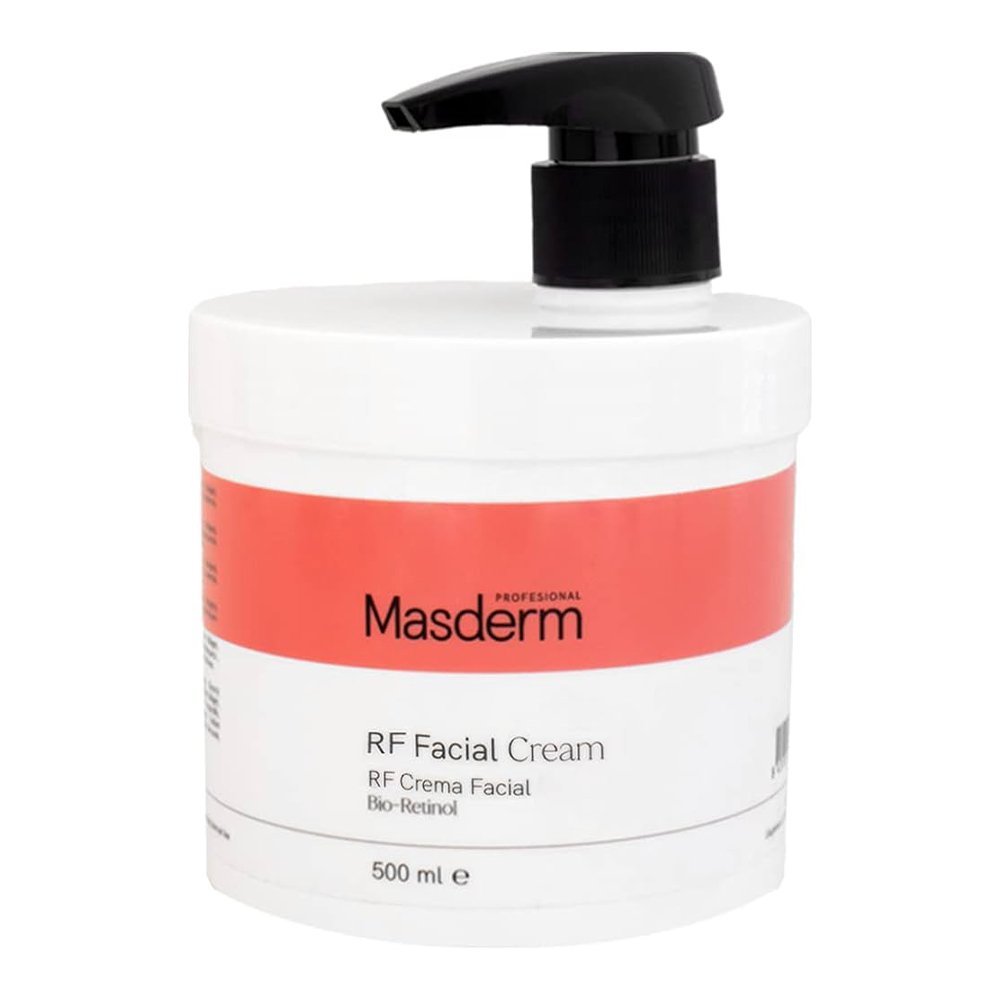All About the HIFU Facial – Uses, Benefits, & Risks
Ready to take your skincare to the next level? Learn all about the HIFU facial – one of the most technologically advanced treatments out there!
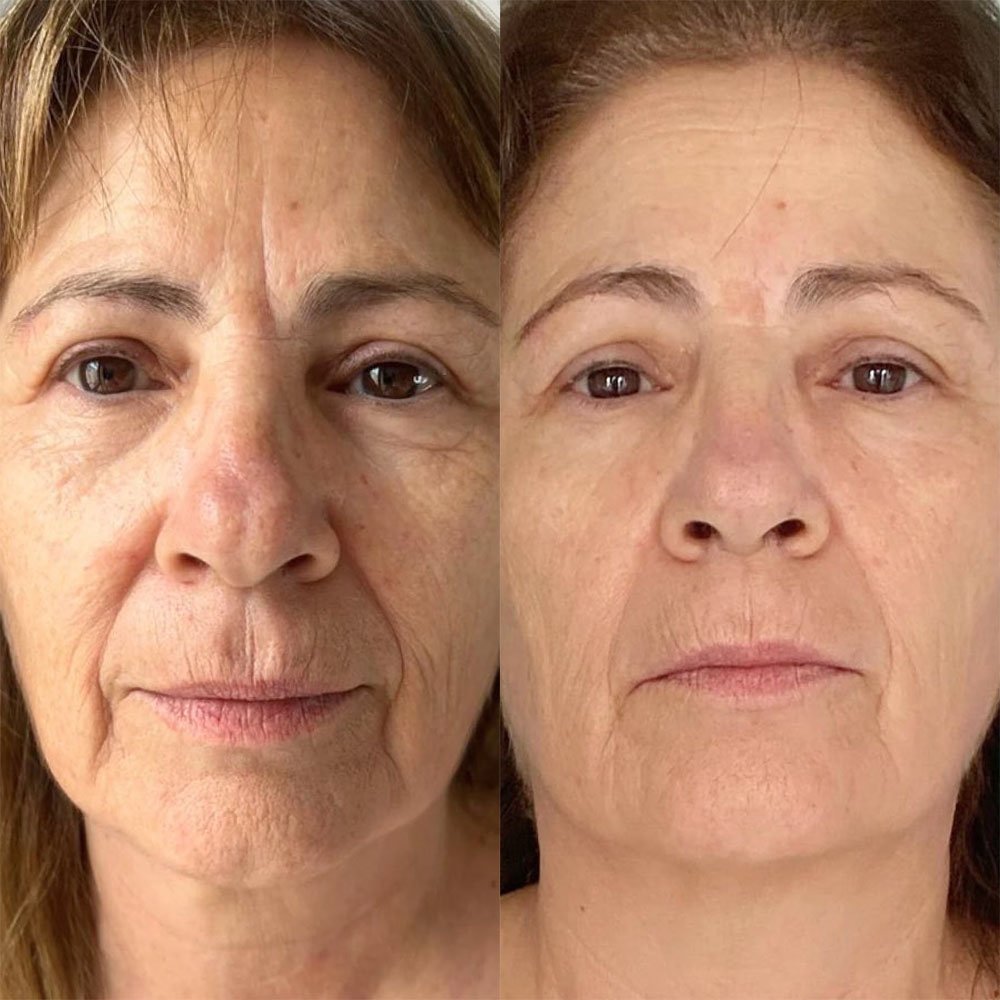
Image source : PMUhub
If skincare just doesn’t cut it for you anymore, maybe it’s time to move on to skin tech! One of the most advanced facials you can get is the HIFU facial, which stands for high-intensity focused ultrasound (and yes, it is as sciencey as it sounds).
This is a great solution for everyone looking to tackle dull skin, sagginess, signs of aging, and other similar maladies that would otherwise require surgery. Thankfully this facial isn’t invasive at all – it’s quick, not uncomfortable, and significantly cheaper than a traditional face lift.
In this article, we’ll tell you all about the high-intensity ultrasound facial, going into how it works, what it’s used for, and how much it costs.
We’ll dive into all the benefits and possible risks & side effects, plus we’ll give you our top product recommendations for doing an ultrasound facial treatment at home.
What Is the HIFU Facial?
The word HIFU stands for high-intensity focused ultrasound, meaning that this is a type of ultrasound facial, meaning that it is a completely non-invasive procedure that relies on frequencies to help fix cosmetic issues.
The HIFU is also effective at treating different skin issues but is primarily focused on reducing the visibility of signs of aging. This includes:
- Dull complexion,
- Sagging skin,
- Fine lines and wrinkles,
- the appearance of jowls.
Other than being used on the face, the HIFU device can also be used on other body parts.
On top of being non-invasive, the treatment is also pretty quick, typically lasting between 30 and 90 minutes per session. There’s also no discomfort associated with it, so we’d say that it’s a pretty good alternative to plastic surgery.
How Does the HIFU Treatment Work?
The HIFU treatment is done using a specific device that focuses ultrasound energy to target the lower layers of the skin, penetrating it deeper than any other facial while keeping the surface layer unharmed.
The point of this beam is to deliver bursts of heat to a very specific spot inside the skin, stimulating the production of collagen and elastin.
As the deep cells take some damage from the treatment, their healing causes the body to produce even more collagen.
All of this leads to improved skin elasticity and decreased signs of aging.
Even though the main force here is heat, you won’t be burned. The tips of HIFU devices are designed to stay unaffected by the ultrasound waves. Plus, in most tools, they also vibrate, so the treatment feels like a massage!
HIFU Facial – Benefits
As this is a relatively new piece of skin tech and a lot of research has gone into the science behind it, you won’t be surprised to know that there are a lot of benefits of HIFU facial.
If we’re talking about ultrasound facial benefits, the first one we need to mention is the very effective stimulation of collagen production, which leads to an improved complexion and a more toned face.
Other than that, HIFU is also renowned for its non-invasive nature with minimal discomfort and no downtime. The results are long-lasting, as the regeneration of cells brings about new waves of freshness even for up to a year.
Finally, we have to mention how versatile this treatment is. It can be used around the face and neck regions, but also on other body parts– but we’ll get into the specifics in the next section.
What Is the HIFU Facial Treatment Used For?
As we already said, this treatment is very versatile. Not only that, but it’s also very effective – you’ll probably need around 2-4 sessions to get the best result. More than that will only be necessary if you choose to target a large area, such as your stomach or back.
Here’s what you can expect from different types of HIFU treatments:
HIFU Non-Surgical Face Lift
The HIFU face and neck lift is its main and most popular use. This is what that initial research that got HIFU recognized in the first place was about and is also where further research is mainly being done.
Paired with no downtime and the longevity of the youthful look, it’s no surprise that this is the primary procedure people think of when they hear the word HIFU
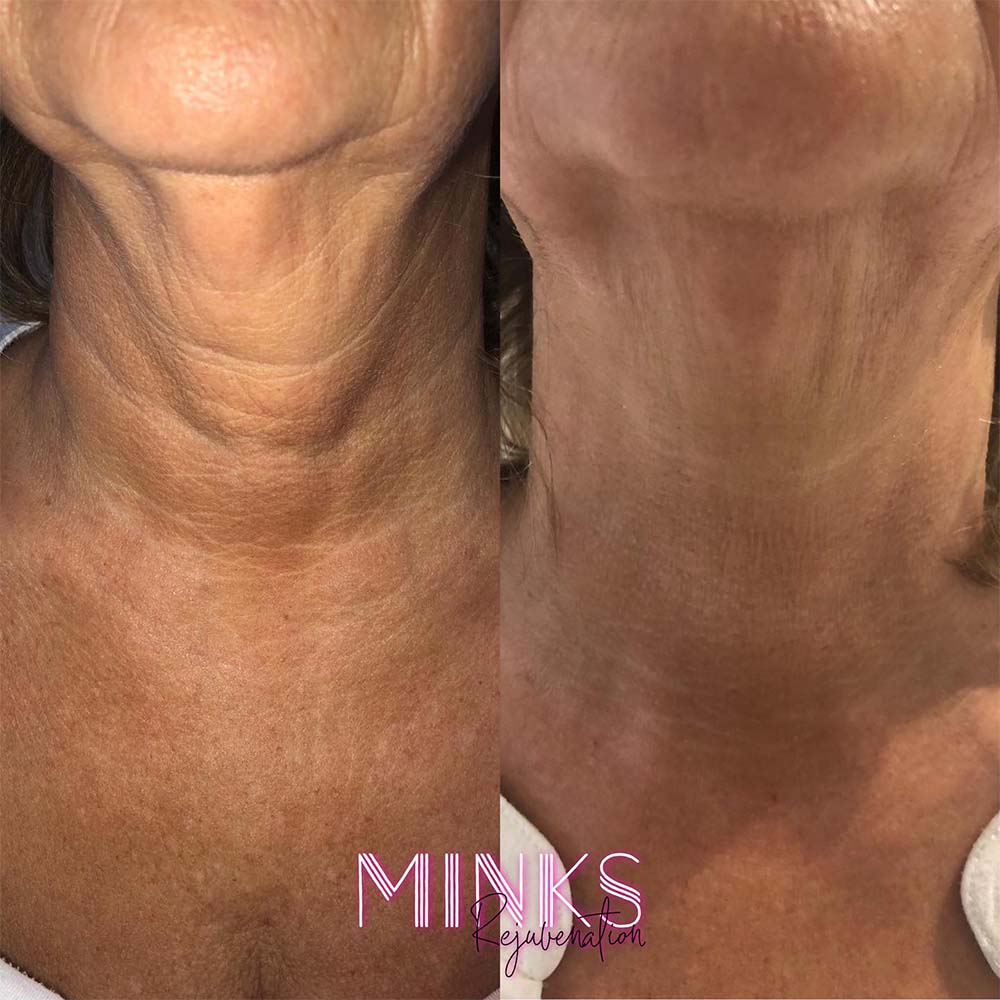
HIFU Face Slimming
The second most popular treatment is for the HIFU face slimming procedure. This works because the energy used to penetrate the skin can also essentially obliterate fat cells. Of course, this requires lots of precision and power, so it’s best to go for a professional treatment.
The HIFU Skin Treatment
When it comes to the benefits related to the skin, the HIFU does 2 things.
HIFU ultrasound skin tightening is the main procedure in which sagging skin is tightened to give a more youthful look while fine lines and wrinkles are flattened.
The second one is more of a very fortunate side effect. The boosted production of collagen from the zaps is also going to positively affect your complexion, resulting in a more even skin tone.
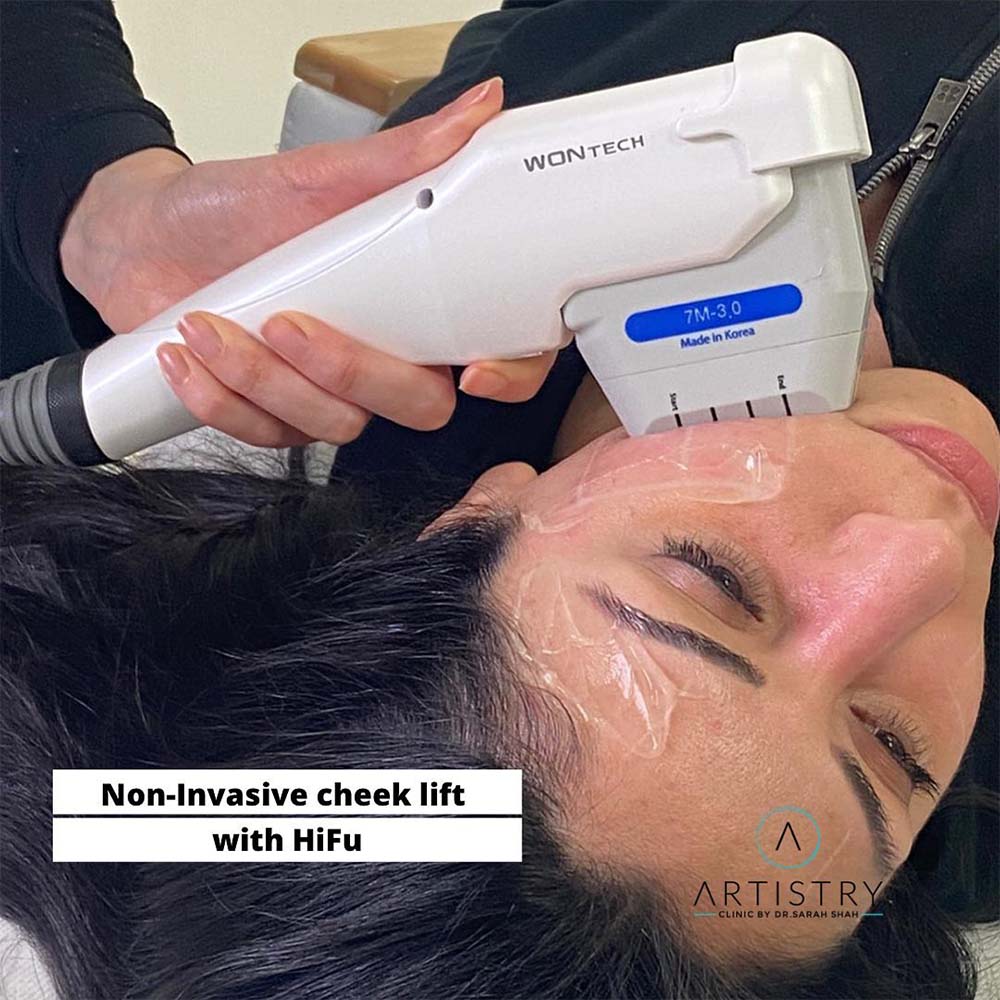
Although the results look great, we’d advise against this treatment.
HIFU Body Sculpting
Finally, we have to mention that the HIFU device isn’t just limited to your face and neck – the device can be used on any body part where you’re experiencing some skin sagging.
The most common uses of this are to tighten a post-pregnancy stomach or to tighten the loose skin that often stays behind after weight loss.
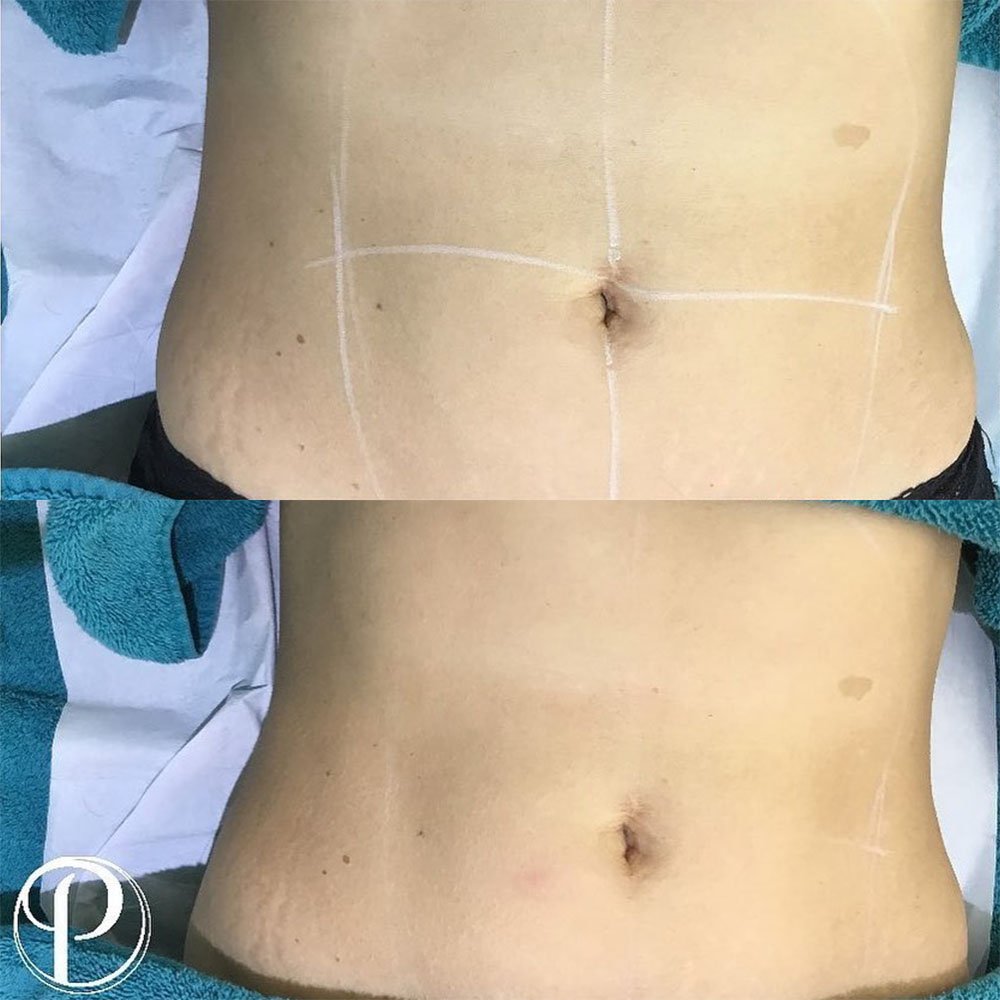
Is HIFU Safe?
Yes! Not only has it been proven safe by several clinical trials, but it’s also been cleared by the FDA for years.
Before HIFU was used for cosmetic purposes, this type of technology was used for the treatment of tumors. In 2008, the HIFU was first used for the treatment of wrinkles and skin laxity for the first time.
Also in 2008, the device got approved by the FDA to be used for brow lifts. Some years and a bit more research later, in 2014, it was finally cleared to be used on the entire face.
Since then, HIFU has evolved to be used for different facial contouring procedures, which are still considered off-label. Although effective, this is somewhat of an uncharted territory, so proceed with caution.
In general, HIFU has just a few contraindications. So, if you have a skin, heart, liver, or kidney disease, you might want to miss out on this one – or at least consult with your GP beforehand.
Is HIFU Safe for Pregnant People?
Yes and no.
Although there were no instances of anything going terribly wrong during a pregnancy or delivery after a HIFU treatment, this technology is still new and needs more research in this area.
Keep in mind that there has been some evidence that might suggest that HIFU has a negative effect on fertility, specifically in women, so if you’re planning to have a baby in the near future, be very careful with HIFU.
Is HIFU Safe While Breastfeeding?
While some medical professionals say that HIFU is okay to do even while breastfeeding, others argue that it could pose a serious health risk. Just to be on the safe side, we’d advise against undergoing HIFU at this tender period.
Ultrasound Facial Treatment Side Effects
Even though it’s a safe, FDA-approved treatment that has proven effective time and time again, there are still HIFU face side effects you should be aware of.
- A red and swollen face after HIFU. This is very common, but it also lasts for a very short time. At most, it will go away after a few days, or, if you’re among the lucky few, even after a few hours.
- Mild discomfort during the procedure. This won’t affect everyone – it depends on how sensitive you are and how high your general pain tolerance is. If it starts to really hurt, let your dermatologist know immediately – something might be wrong.
- Bruising. Some bruising may appear on the day of the treatment or the next day. This won’t be anything major and won’t last long. And, again, this doesn’t happen every time.
HIFU Risks
As is the case with any other skin treatment or medical procedure, there are always going to be a few risks involved. Thankfully, with HIFU, this doesn’t involve anything major.
One of your top concerns should be that the treatment might not work. Although it has a proven track record of efficacy, everyone’s skin is different, so it’s not impossible that the outcome is less dramatic than what you expect. It’s best to consult with your GP and/or dermatologist in advance.
Other than that, there is also a possibility of skin burns. This happens extremely rarely and is usually the result of either a faulty device or an inexperienced care provider. To avoid this, make sure you go to a trusted professional.
In even rarer cases, some people may experience temporary numbness. Much like with burns, the numbness will also appear as a result of improper treatment, so make sure you go to the best clinic possible.
HIFU Face Treatment – Cost
On average, the HIFU facial cost is between $1500 and $2000.
Admittedly, this isn’t cheap. But, it’s still a much cheaper alternative to a surgical face lift that usually amounts up to over $5000.
The cost will, naturally, vary from clinic to clinic. But, given the risks associated with an inexperienced care provider or using bad machinery, we’d advise you to still choose based on quality and not on price.
Can You Do HIFU at Home?
Yes, but the results won’t be the same.
Similar to any other facial treatment or procedure that you can do both at a salon and at home, a professional will always be able to give you more dramatic results. This is due to not only their experience and expertise but also to the fact that they have access to professional-grade equipment.
With that being said, there are still devices available for home use. These are, of course, weaker than those that a dermatologist would use. So, if you want to get just a little bit of work done and don’t have anything drastic to fix, we’ll tell you how to get the best results.
How to Do HIFU Lifting at Home
Before we provide instructions on how to do a HIFU lift by yourself and on yourself, we have to tell you that you need to talk to your dermatologist first and establish that you’re good to go.
Other than that, it’s important to know that, no matter how much research you’ve done, it’s best to trust the instructions that come with your device over anything you’ve read online.
Keeping that in mind, here’s how to do an at-home HIFU treatment:
- Clean your face and the device. The device is electric, so do not put it under water – just wipe it with a disinfectant.
- Apply a conducting gel. You can find a few of our favorites below.
- Map out the areas you’ll be treating. Divide your face into sections – 1-inch squares will do. Avoid the areas around your eyes and lips, as well as any sensitive or damaged areas.
- Place the device on one square. Don’t move it until it beeps – this means that it’s done with the energy blast.
- Move on to the next square after the beep.
- Leave the gel on for 30 minutes, to allow your skin to cool off naturally.
- Wash your face as normal.
The Best HIFU Face Lift Devices for At-Home Use
When talking about HIFU devices for at-home use, the main thing to know is that nothing can truly give you the amazing results that can be achieved professionally.
Still, there are some products on the market today that are definitely worth investing in to get a similar effect of lifting and tightness. Here are our top picks:
Radio Frequency Skin
Tightening Machine
The Best Conductive Gels for HIFU Therapy for Face
Conductive gels are used for different treatments. So, if you already have one you use for, for example, microcurrent facials, you can use that one.
But, if you don’t have one, these are our favorites from Amazon:
HIFU vs Ultherapy
There’s a lot of confusion between Ultherapy and HIFU, and this is completely justified. The treatments are very similar in that they both use frequencies to target the same areas and handle the same issues: sagging skin, dull complexions, and signs of aging.
They both also boost the production of collagen and elastin, based on the same principle of targeting the deeper layer of the skin.
The main difference is in the technology used and the types of frequencies, but even these differences are minimal.
HIFU vs Thermage
Thermage is also similar to HIFU in that that it uses similar technology. However, Thermage and HIFU differ in that HIFU is more precise in aiming the frequencies, while Thermage covers a wider area.
Another key difference is that HIFU is best for lifting sagging skin, while Thermage is best at tightening it. These are both rejuvenating treatments, so the confusion is also justified.
If you’re still unsure about which treatment is best for you, consult with your dermatologist and they’ll point you in the right direction.
HIFU Facial – Main Takeaways
As you can see, HIFU is one of the most advanced pieces of skin tech we have. It’s a great non-invasive alternative to expensive and complex surgical face lifts.
The HIFU device can be applied to any region of the body, as it’s been proven to have a rejuvenating and lifting effect both on the face and on larger areas.
There is also the option of doing the treatment yourself, but the results won’t be as dramatic.
weekly insight into PMU insdustry
Subscribe to our FREE newsletter. 100% good stuff.

support us so we can keep providing you with free education , information and inspiration.

